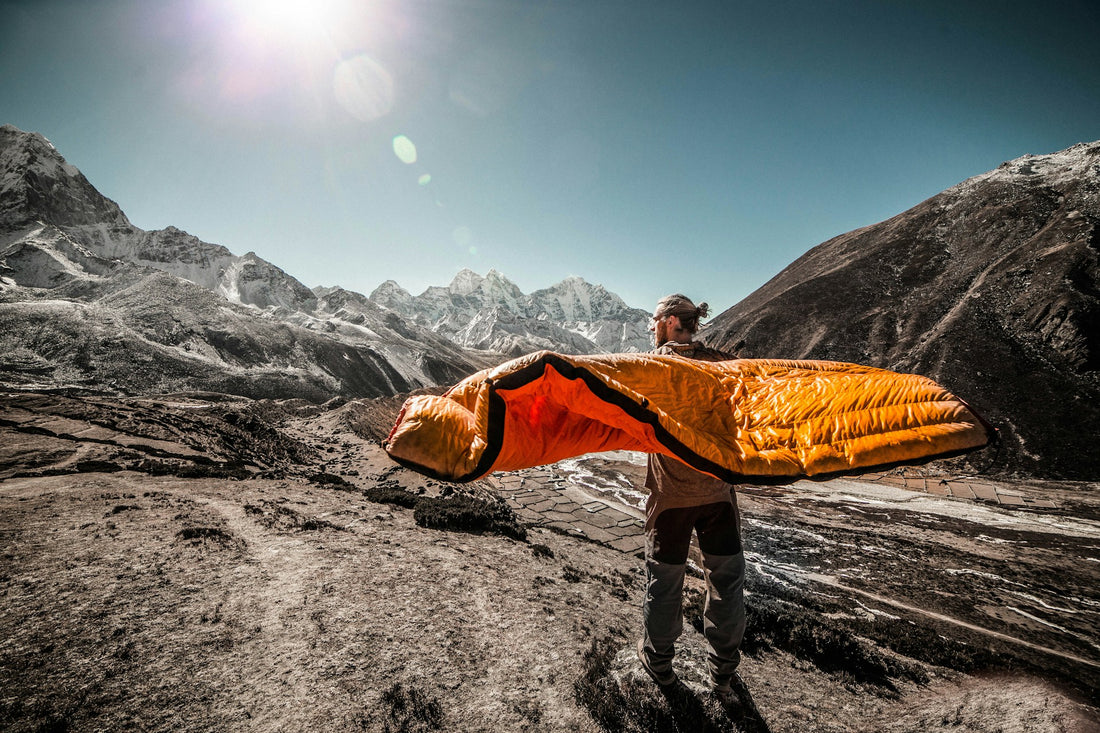
How to Choose the Right Sleeping Bag for Different Weather Conditions
Share
Choosing the right sleeping bag is a crucial aspect of outdoor camping that can make or break your experience. Picture this: after a long day of hiking through stunning landscapes, you curl up in your sleeping bag only to feel too cold, too hot, or uncomfortable. All your previous adventures could turn into sleepless nights if you're not properly equipped. That's where understanding how to choose the right sleeping bag for different weather conditions comes into play.
In this guide, we'll explore everything you need to know—from temperature ratings and materials to specific camping conditions—to ensure those cozy nights under the stars are as perfect as you imagine.
Understanding Temperature Ratings in Sleeping Bags
When selecting a sleeping bag, the first thing you’ll often notice is its temperature rating. This is a vital metric that indicates in which temperatures the bag will keep you warm.
Temperature Classification:
- Summer Sleeping Bags (35°F and above): Ideal for warm-weather camping. These bags come with lighter insulation and more breathability, enabling you to stay cool within temperate climates.
- Three-Season Sleeping Bags (20°F to 35°F): Versatile for spring, summer, and fall, these sleeping bags provide a balance between warmth and weight, making them perfect for varied weather conditions.
- Winter Sleeping Bags (20°F and below): When facing sub-zero temperatures, you’ll need a winter-specific sleeping bag. These feature extra insulation, drafting collars, and sometimes even water-resistant materials to keep you warm during freezing nights.
Expert Advice: Outdoor gear expert Sarah Annington tells us, ""It's wise to choose a sleeping bag with a lower temperature rating than what you expect to encounter. This adds a margin of safety against unpredictable weather.""
Different Sleeping Bag Materials: Pros and Cons
The materials used in sleeping bag construction directly impact their performance in various weather conditions. Let’s break down the two main types of insulation: down and synthetic.
Down Insulation
- Pros: Excellent warmth-to-weight ratio, compressibility, durability, and longevity. Down bags are incredibly cozy and lightweight, making them a favorite for serious backpackers.
- Cons: Can be pricey, loses insulating properties when wet, and requires careful maintenance to avoid clumping.
Synthetic Insulation
- Pros: More affordable, retains warmth even when wet, and dries faster. Perfect for beginner campers or those who anticipate wet weather.
- Cons: Heavier and bulkier compared to down. They may not pack down as small, which can be an issue on multi-day hikes.
Practical Tip: If your adventures often take you to unpredictable, wet environments, a synthetic sleeping bag could be the safer choice.
Other Considering Factors When Choosing Your Sleeping Bag
1. Shape and Size
- Rectangular Sleeping Bags: Most comfortable and spacious, great for car camping.
- Mummy Sleeping Bags: Tapered shape minimizes weight and retains heat, ideal for cold-weather backpacking.
- Two-person Sleeping Bags: Perfect for couples or friends who enjoy sharing their sleep space.
2. Weight and Compressibility
Based on your activity level, the weight of your bag can be a deciding factor. Lightweight options are essential for backpackers who count every ounce, while heavier bags are suitable for those camping from a car or campground.
3. Budget
Quality sleeping bags range in price dramatically. However, investing in a better quality sleeping bag ensures years of use and comfort. Be sure to check for seasonal sales or discounts at online stores like Tatooine Nomad to shop smart.
Use Cases and Practical Advice
When it comes to real-life camping situations, understanding your environment makes all the difference.
Camping in Colorado:
If you’re planning a summer hike in the Rockies, a three-season sleeping bag with synthetic fill would serve you well at temperatures that can dip unexpectedly at night. An anecdote from a hiker we interviewed mentioned how her synthetic bag saved her during a sudden drop in temperature, while her down bag friends were
